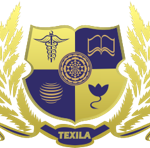Headache is one of the most common medical complaints. Almost everyone experiences a headache from time to time. In the large majority of cases, it is a completely mild condition which is a nuisance and does not represent any significant or long-term medical problems. Headaches can be more complicated than most people realize. Different kinds can have their own set of symptoms, happen for unique reasons, and need different kinds of treatment.
Once you know the type of headache you have, you and your doctor can find the treatment that’s most likely to help and even try to prevent them.
What Are the Types of Headaches?
There are 150 different types of headaches. The most common ones are:
Chronic headaches: Also called stress headaches, chronic daily headaches, or chronic non-progressive headaches, they are the most common type among adults and teens. They cause mild to moderate pain and come and go over time.
Migraines: These headaches are often described as pounding, throbbing pain. They can last from 4 hours to 3 days and usually happen one to four times per month. Along with the pain, people have other symptoms, such as sensitivity to light, noise, or smells; nausea or vomiting; loss of appetite; and upset stomach or belly pain.
Cluster headaches: This type is intense and feels like a burning or piercing pain behind the eyes, either throbbing or constant. It’s the least common but the most severe type of headache. The pain can be so bad that most people with cluster headaches can’t sit still and will often pace during an attack.
They’re called “cluster headaches” because they tend to happen in groups. You might get them one to three times per day during a cluster period, which may last 2 weeks to 3 months. The headaches may disappear completely (go into “remission”) for months or years, only to come back again.
Sinus headaches: With these, you feel a deep and constant pain in your cheekbones, forehead, or bridge of your nose. They happen when cavities in your head, called sinuses, get inflamed. The pain usually comes along with other sinus symptoms, such as a runny nose, feeling of fullness in the ears, fever, and swelling in your face.
Acute headaches: Kids get these headaches that start suddenly and go away after a short time. If there are no symptoms of other nerve problems, the most common cause is a respiratory or sinus infection.
What Causes Headaches?
The pain you feel during a headache comes from a mix of signals between your brain, blood vessels, and nearby nerves. Specific nerves of the blood vessels and head muscles switch on and send pain signals to your brain. But it’s not clear why these signals turn on in the first place.
People often get headaches because of:
Illness: such as an infection, cold, or fever. They’re also common with conditions like sinusitis (inflammation of the sinuses), a throat infection, or an ear infection. In some cases, the headaches may be the result of a blow to the head or rarely, a sign of a more serious medical problem.
Stress: Common causes of tension headaches include emotional stress and depression as well as alcohol use, skipping meals, changes in sleep patterns, and taking too much medication. Other causes include eyestrain and neck or back strain due to poor posture.
Headaches, especially migraines, tend to run in families. Most children and teens (90%) who have migraines have other family members who get them. When both parents have a history of migraines, there is a 70% chance that their child will also have them. If only one parent has a history of these headaches, the risk drops to 25%-50%.
Here is an Article published by The Week Magazine on the types of Head Ache and the way to block it. Doctor Dobson Program Chairman for MMSC Sports and Exercise Medicine of Texila American Universityhas shared his views and comments on the same. For his detailed views,
http://www.theweek.in/features/lifestyle/exercise-related-headaches-are-common.html

